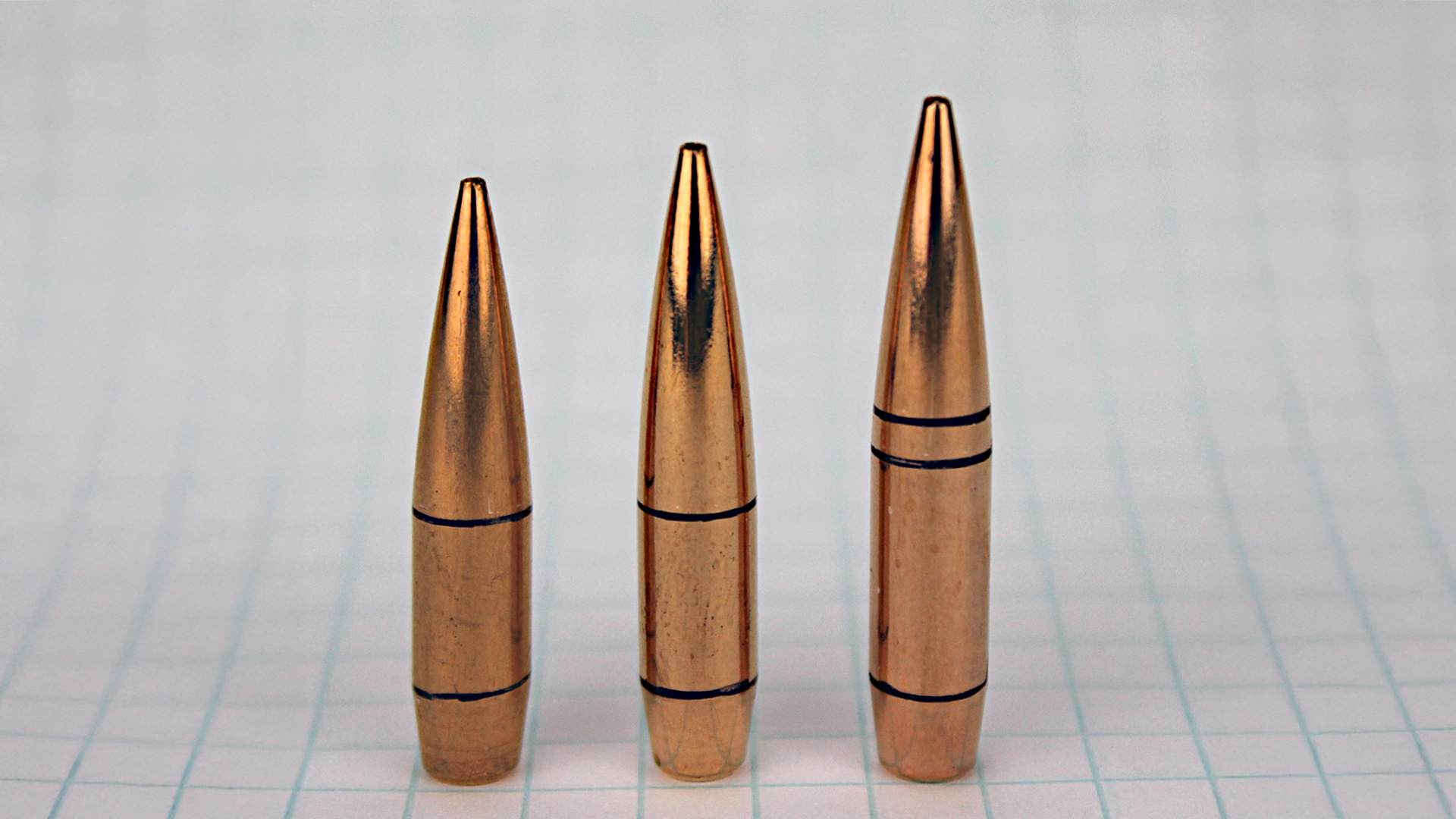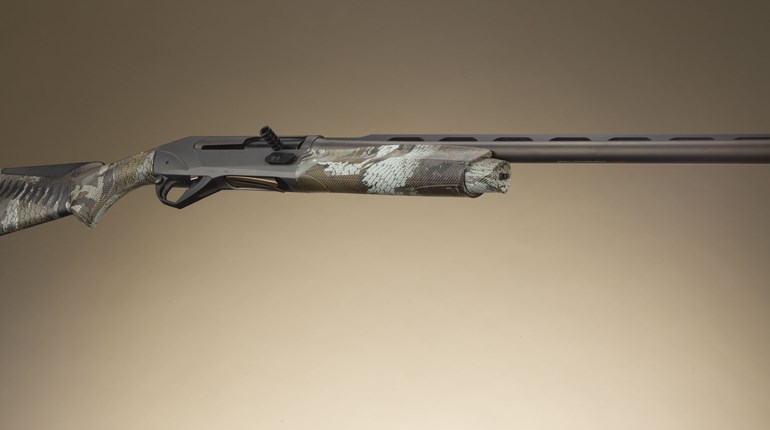
When I began carrying a concealed carry handgun on a regular basis in 1996, I had no idea that concealed carry guns would become a top trendinig topic in gun magazines and online media, but times have changed. As an instructor who teaches in a broad spectrum, I see more interest in concealed carry defensive training than everything else combined.
Concealed carry is a hot topic in a market that saw a 13.7-percent increase in 2021. The firearms industry has seen the opportunity and we’re constantly seeing the introduction of new and better guns for the concealed carry market. Almost every major pistol manufacturer has introduced a new high-capacity compact pistol over the last three years. Some more than one, such as Ruger introducing two new designs at the close of 2021.

In 1996 when my home state of North Carolina introduced legal concealed carry, the most likely concealed carry handgun was a small, lightweight revolver with a five-round cylinder. The lightest of these guns, the Smith & Wesson Airweights weighed about 14 ounces and were chambered in .38 Special. The standard load was a 158-grain bullet that provided about 200 foot-pounds of energy. The +P loads with a 125-grain bullet upped the ante to about 250 foot-pounds, both from a four-inch barrel. This would have been substantially lower with the two-inch (or shorter) barrels of most carry guns.
The .380 ACP was introduced in 1908, and at that time only full metal jacket ammunition was considered practical. The most commonly appreciated .380 ACP pistol was the Walther PPK and guns of similar size and weight. The PPK had a magazine capacity of six rounds and weighed 19 ounces, making it heavier and less powerful than the lightweight .38 Spl. revolvers. For most, the .38 Spl. revolver seemed a better choice.

During the time I was carrying a .38 Spl., I considered the .380 ACP round as substandard for defensive carry, although the former was only marginally superior to the latter. The full metal jacket .380 ammunition was the only offering, and it was marginal for penetrating heavy clothing and there was zero expansion. The .38 Spl. 158-grain round-nosed loading that was once the standard loading for police was no better, so I carried +P 125-grain hollow points. Times have changed and defensive ammunition has improved significantly.
Now, with concealed carry the hottest segment of the firearms market, munitions companies have put a lot of effort into improving performance. Modern ammunition such as Federal HST is a totally different proposition. Is a .380 ACP loaded with state-of-the-art ammunition as effective as a similar load in a 9 mm Luger? No, but it works in much smaller, lighter and more easily concealed guns, and it’s better than the standard .38 Spl. load once the standard for law enforcement.
Until now, the super-small .380 Autos were lacking in magazine capacity. Most used six-round magazines, had poor to almost nonexistent sights and were difficult to shoot well. Now, this has changed—we now have a Miracle .380.

The small, high-capacity 9 mm guns introduced in the last few years have been referred to as the “Miracle Nines” because they checked all the boxes for a concealed carry pistol. Nearly every major handgun manufacturer now has a high-capacity 9 mm, with two new guns from companies who didn’t even produce a handgun for almost a century—Mossberg and Savage.
While I like Ruger’s new MAX 9, I am astonished with the Ruger LCP MAX ($469, ruger.com). Since its introduction, I’ve hailed the LCP II as the best of the micro .380s, but the LCP MAX creates a whole new category with great sights and trigger combined with a magazine capacity that puts it in the miracle class. Standard capacity is 10 rounds and there’s an accessory 12-round magazine.

In spite the double-stack magazine, the Ruger LCP MAX is only 0.81 inch wide and weighs less than 11 ounces. With the 10-round magazine, it’s only slightly larger than the LCP II while almost doubling magazine capacity. Adding a little width and about a half-inch to the grip makes it surprisingly more comfortable. The LCP Max really comes into its own with the optional 12-round magazine allowing a comfortable grip that gives my pinkie finger a solid perch.
The trigger pull is good, breaking around six pounds; there’s a little over travel, but it’s a good trigger for personal defense. The bladed trigger feels similar to most striker-fired guns, though the LCP guns are all hammer-fired. I don’t teach shooting from the reset. I find most shooters get better results by coming off the trigger and reacquiring the pressure wall during recoil, but for the interest of those who do, the reset is reasonably short. A further improvement is a better extractor. I would have preferred a slightly longer ejection port. Unless the slide is snapped back with enthusiasm, a loaded round tends to catch on the front of the port while clearing the gun. In addition, there’s a loaded chamber window through the ejection port.
Sights are dovetailed using the Glock dovetail profile into the slide and, excellent for a gun this small, are large enough for fast acquisition but small enough for easy concealment. There’s a cocking surface on the front of the rear sight and the HiViz front sight is a Tritium insert in a white outline circle.

Shooting the Ruger LCP MAX feels like shooting a much larger gun. The grip is much more rounded than the Ruger LCP II grip and the 12-round magazine provides room for all three fingers. The stippling on the LCP MAX grip is a little lighter than I prefer, but still good. In spite of the light weight, recoil is more manageable than most small .380s because of the grip provided.
I have a standard 16-round qualification I use for training defensive shooters. It consists of strong- and support-hand shooting at close range, a magazine change, four shots in a short time limit and two shots each at seven and 10 yards. I use a BLEA reduced target with a two- by three-inch 10-ring. Shooting defensive ammunition, it was easy to stay within the time limits, and I scored above 98 percent on all runs with one run at 99.4 percent. In short, the Ruger LCP MAX is a good pistol that’s easy to shoot well, in spite of its diminutive size.

Disassembly of the Ruger LCP MAX .380 ACP requires removal of a pin and the slide comes off without touching the trigger. The recoil spring is not captured on the guide. It’s simple, but does require removal of a pin. I’m sure that a takedown lever system was not used for simplicity and weight reduction.
The result is a tiny, light and easily concealed handgun with real magazine capacity, truly usable sights and a reasonable trigger. The Ruger LCP MAX is so good that I’ll be surprised if other companies aren’t working on their high-capacity micro .380s as I write this. I’m laying claim to the term Miracle .380, because this gun is so good that other manufacturers are going to look at it and head for the drawing boards.
Ruger LCP MAX Specifications




































